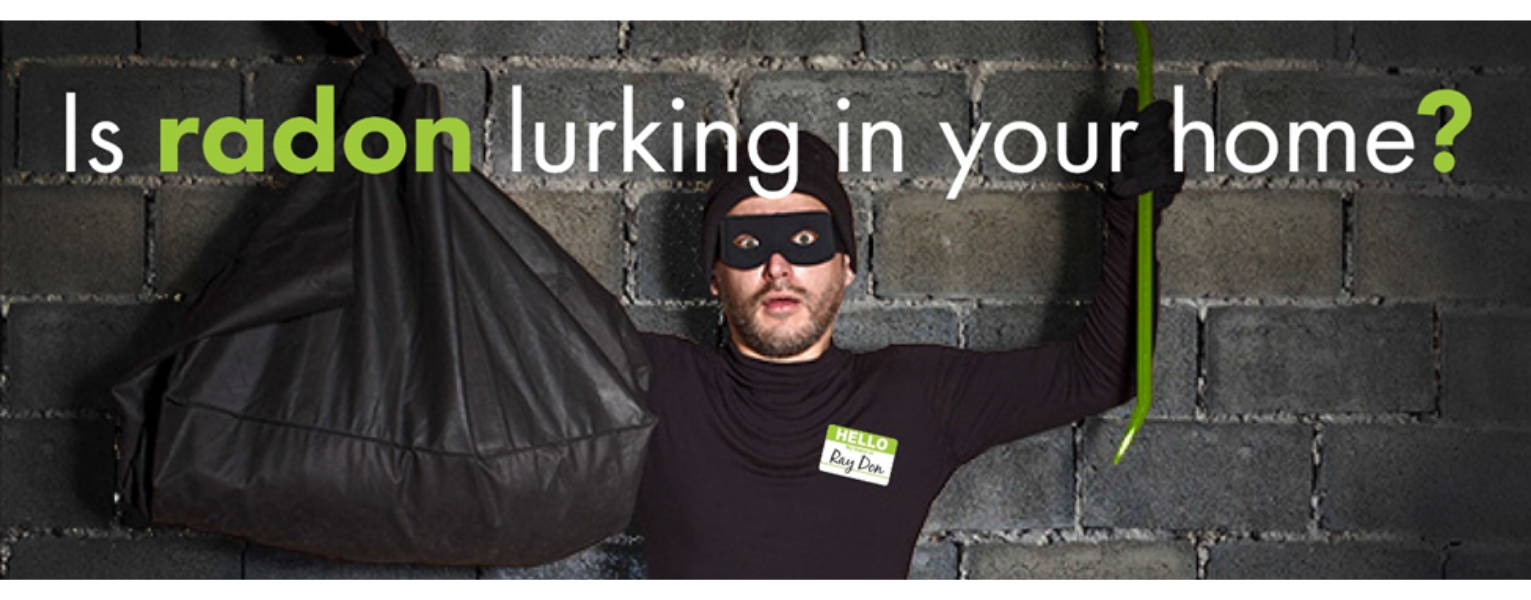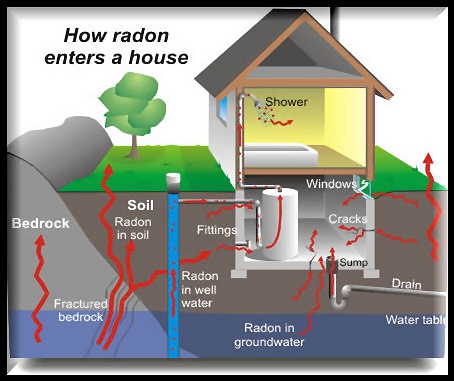
You can’t see, smell or taste radon. Yet, it could be a problem if it gets in your home. Radon testing by the Ohio Department of Health has indicated some levels of concern for Knox County residents where some homes have tested 50 times more than what is considered safe. In-home testing is the only way to determine the level of radon in your home. The best time to test is during the colder months when the house is closed up due to the weather.
Residents of Knox County: Order a discounted radon test kit online
What is radon?
Radon is a colorless, odorless radioactive gas that seeps up from the earth. When inhaled, it gives off radioactive particles that can damage the cells that line the lung. Long term exposure to radon can lead to lung cancer. In fact, over 21,000 lung cancer deaths in the US each year are from radon, making it a serious health concern. About 2,900 of these deaths occur among people who have never smoked.
Where does radon come from?
Radon comes from the soil. Radon is caused by the natural breakdown (radioactive decay) of materials that contain uranium. Radon can be found in high concentrations in soils and rocks containing uranium, granite, shale, phosphate and pitchblende. As these materials disintegrate, it turns into radioactive gas...radon. As a gas, radon moves up through the soil and into the air you breathe.
Where is your greatest exposure to radon?
While radon is present everywhere, and there is no known, safe level, your greatest exposure is where it can concentrate-indoors and where you spend most time-at home. Your home can have radon whether it be old or new, well-sealed or drafty, and with or without a basement.
Why is radon a common problem in Knox County homes?
High radon exists in every state in the US.
Map of Ohio Showing Radon Concentrations
Some factors that further contribute to Ohio’s high radon levels include:
- Ohio’s geology produces an ongoing supply of radon.
- Ohio's climate affects how our homes are built and operate.
- Ohio’s homes have basements that are used as living spaces.
How does radon enter a home?
Radon, because it is a gas, is able to move though spaces in the soil or fill material around a home's foundation. Ohio homes tend to operate under a negative pressure - this is especially true in the lowest portions of the home and during the heating season. This negative pressure acts as a vacuum (suction) that pulls soil gases, including radon, into the lower level of the structure. Some causes of home vacuum are:
- Heated air rising inside the home (stack effect).
- Wind blowing past a home (downwind draft effect).
- Air used by fireplaces, wood stoves, and furnaces (vacuum effect).
- Air vented to the outside by clothes dryers and exhaust fans in bathrooms, kitchens, or attics (vacuum effect).
Radon can enter a home through the floor and walls -- anywhere there is an opening between the home and the soil. Examples of such openings include dirt floor crawl spaces, unsealed sumps, cracks in slab-on-grade floors, utility penetrations, and the tiny pore spaces in concrete block walls. A basement, of course, provides a large surface area that contacts soil material.
How can I find out if my home has a radon problem?
The EPA recommends that all homeowners test their homes for radon. A radon test is the only way to find out how much radon is in your home and if you and your family are at risk. Performing a radon test on your own is easy, inexpensive and takes only a few minutes of your time. The results of a properly performed radon test will help determine if you need to take further action to protect yourself from the health risks of radon.
Obtain discounted radon test kit online
What if my test shows a high level of radon?
If a reading is greater than 10 pCi in the initial short term test, a second test is recommended to properly evaluate the extent of the problem. In most cases the control measures are reasonably inexpensive such as improving air circulation, sealing or cracks in basement floors and walls and venting of sumps. A number of steps can be taken to lower the amount of radon in a home. A quality radon reduction (mitigation) system is often able to reduce the annual average radon level to below 2 pCi/L. Experienced radon mitigation professionals are available and can install appropriate control systems.
